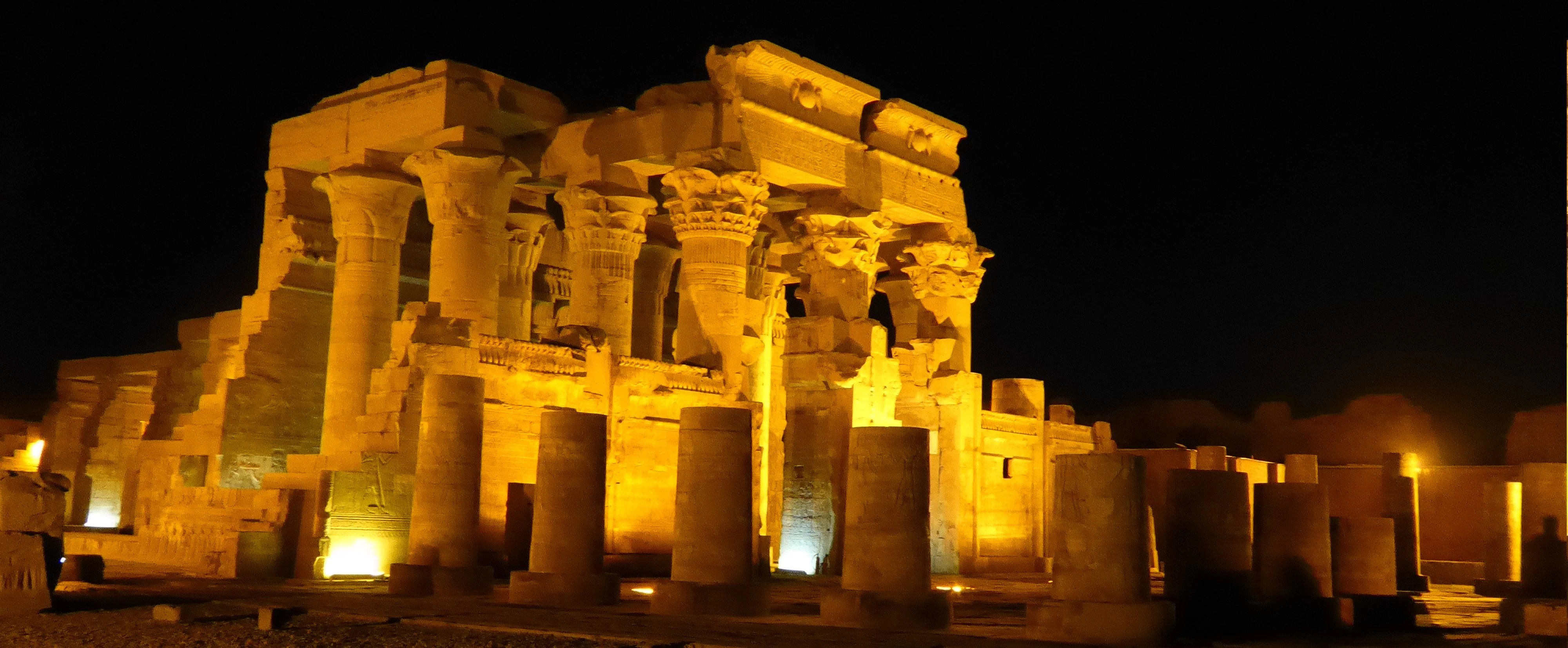


Situated north of Aswan about 50 miles, along the banks of the Nile, one finds this exceedingly long, wide, and lovely river - the grand river of Egypt. Among the very unusual and captivating ancient sites in Egypt, the Kom Ombo Temple is a temple dedicated to two gods at once, unlike any other temple in Egypt. It is included in most Egypt tours; this is the twin temple that features two different sections devoted to each deity. It is more than a marvel of architecture; it is an insight into religious, cultural, and technological advances in ancient Egypt.
One of the principal marvels of Kom Ombo Temple is its double adoration, that is, the worship of Horus the Elder and that of Sobek. Unlike all other Egyptian temples which invariably have but one god, the Kom Ombo basic temple is divided symmetrically into halves, each devoted to one of the gods. Aswan day tours feature as one among various things such as the falcon-headed god of Horus, who represents the sky, kingship, and protection, while the crocodile-headed god of Sobek embodies the Nile, fertility, and powers. This unique structure thus shows that there is a proper balance and harmony between the forces of these two mighty gods.
The temple really has two parts of it, which are sanctuaries and reliefs representing the separate myths and symbolism of each god. Thus, the pilgrims can feel for themselves and get a detailed insight into the ancient Egyptian spirituality that lies between Horus's peaceful protector identity and Sobek's dynamic and primal world.
The Kom Ombo temple was built during the 2nd and 1st centuries BC in the year of the Ptolemaic period. Even though it was mainly constructed under the reign of the Ptolemaic kings, multiple renovations and extensions to the temple site took place over centuries. The temple was very much a religious center in which offerings would be given and ceremonies performed before Horus and Sobek, making it one of the attractions of Aswan. It was a kind of healing center where they would go to give divine solutions to any problems, especially those concerned with the Nile and its crocodiles.
The temple included a shrine, more than a shrine; it was a big place of worship in the ancient history of the Kom Ombo Temple. The Ptolemaic period temple not only contained within it the religious aspect but also gave away a lot of constructive history in the fact that it was a popular blending of the Egyptian and Greek styles. The architecture of the Kom Ombo Temple truly is a nexus of two ancient cultures, for it imitates Egyptian styles but combines them with other forms that are Hellenistic.
The most striking feature of the Kom Ombo Temple is its architectural design. The plan is entirely symmetrical, with a central axis along the middle of the whole structure, defining the two zones of the shrine: one for Horus and another for Sobek. Egypt day tours often highlight this unique design, where each of these two sections has identical structures on both sides to create a sense of balance and intimacy.
The temple at Kom Ombo has a large hall with a hypostyle supported by twelve massive columns, each sculptured with bas-reliefs showing the gods and kings and even mythical scenes. Of these columns, some bearing the capitals in the Corinthian style are a reminder of the great influence of Greek architecture during the Ptolemaic period. The walls of the temple are covered with high reliefs explaining the various scenes from the life of ancient Egyptians, religious ceremonies, and mythological stories.
Beyond its importance as a religious site, Kom Ombo Temple is thought to have served as the temple of medical knowledge and healing in ancient Egypt. The inscribed reliefs on the walls of the temple depict various surgical instruments like scalpels, forceps, and other ancient Egyptian medical equipment. Historians think that this implies that the temple is a healing place where one seeks divine intervention for any physical ailment, mostly related to the Nile and its creatures like crocodile bites, making it one of the top things to do in Aswan.
These medical reliefs give valuable details about the extent of the ancient Egyptians' knowledge of surgery and medicine. Additionally, what it entails and where it would lead an impressive amplifies the healing mystery of the temple in ancient Egyptian culture.
Kom Ombo Temple is a must for people who will travel on an Egypt Nile cruise. This temple is located about halfway between Luxor and Aswan, making it an ideal place to stop by on any Nile route. Tourists visiting the temple will admire the sound structure accompanying the legend of Horus and Sobek, as well as further insights into the ancient Egyptians' understanding of medicine.
The best time to visit Kom Ombo Temple is in the early morning hours or late in the afternoon- sunlight throws such a golden warmth across the site, creating a rather magical effect. As it stands in a peaceful environment steeped in historical, cultural, and social significance, this is surely one of the most alluring destinations in Egypt.
Kom Ombo temple is proof of the antiquity and incomparability of the ancient religious and cultural lives of the Egyptians. The temple has an insight into the ancient world from its dual dedication to Horus and Sobek, connection to the Nile, and exquisite medical reliefs. This extraordinary location allows exploration not just of the ancient Egyptian gods, but also of their advanced knowledge of medicine, architecture, and the world. Besides being for the Egyptologist and lover of history, Kom Ombo Temple is a place where curious travelers cannot afford to miss out.

Copyright © 2024 All Rights Reserved
